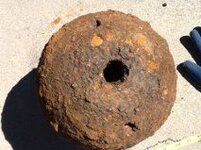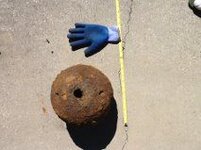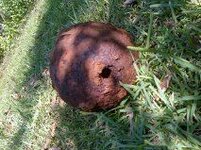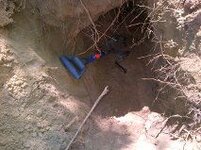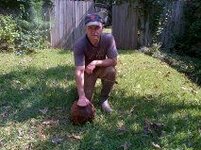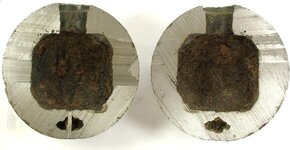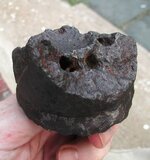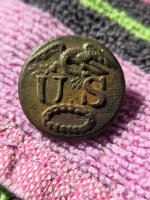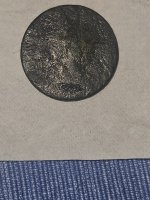N.O. noir et d'or
Full Member
- Dec 9, 2012
- 193
- 197
- Detector(s) used
- White's Dfx 300, Fisher CZ20, Garrett ATX, XP Deus
- Primary Interest:
- Relic Hunting
I guess it would be a retirement present as I just pulled the plug last week after 27 years of service. I'm hoping that what I dug is a 1841 Seacoast Mortar Shell, but I need CB Guy, and the other experts here to provide their opinions. As a grateful follower of CB Guy's posts, I consulted the 1864 Ordnance Manual and my measurements are fairly close. The weight on a bathroom scale (all I have) comes in at 86lbs, but I did clean out the interior of the shell with a high pressure hose. The weight per said manual is 88lbs. The diameter, per my measurement with a diameter tape, comes in at just under 10 inches - 9.87 per the manual. Also, I am very close to 6 inches between the "ears" which is noted in the manual. It took 2 1/2 hours to dig it out and was approximately 4 1/2 feet deep. The soil is quite sandy until that depth when in turns into a very hard clay bed. As a retirement present for myself, I purchased a used Garrett ATX from Bart at Big Boys Hobbies, and this was my first time using it. It does go very deep! This is the first time that I've inserted photos, so I'm hoping that they are viewable - please advise if not. Thanks, N.O.
